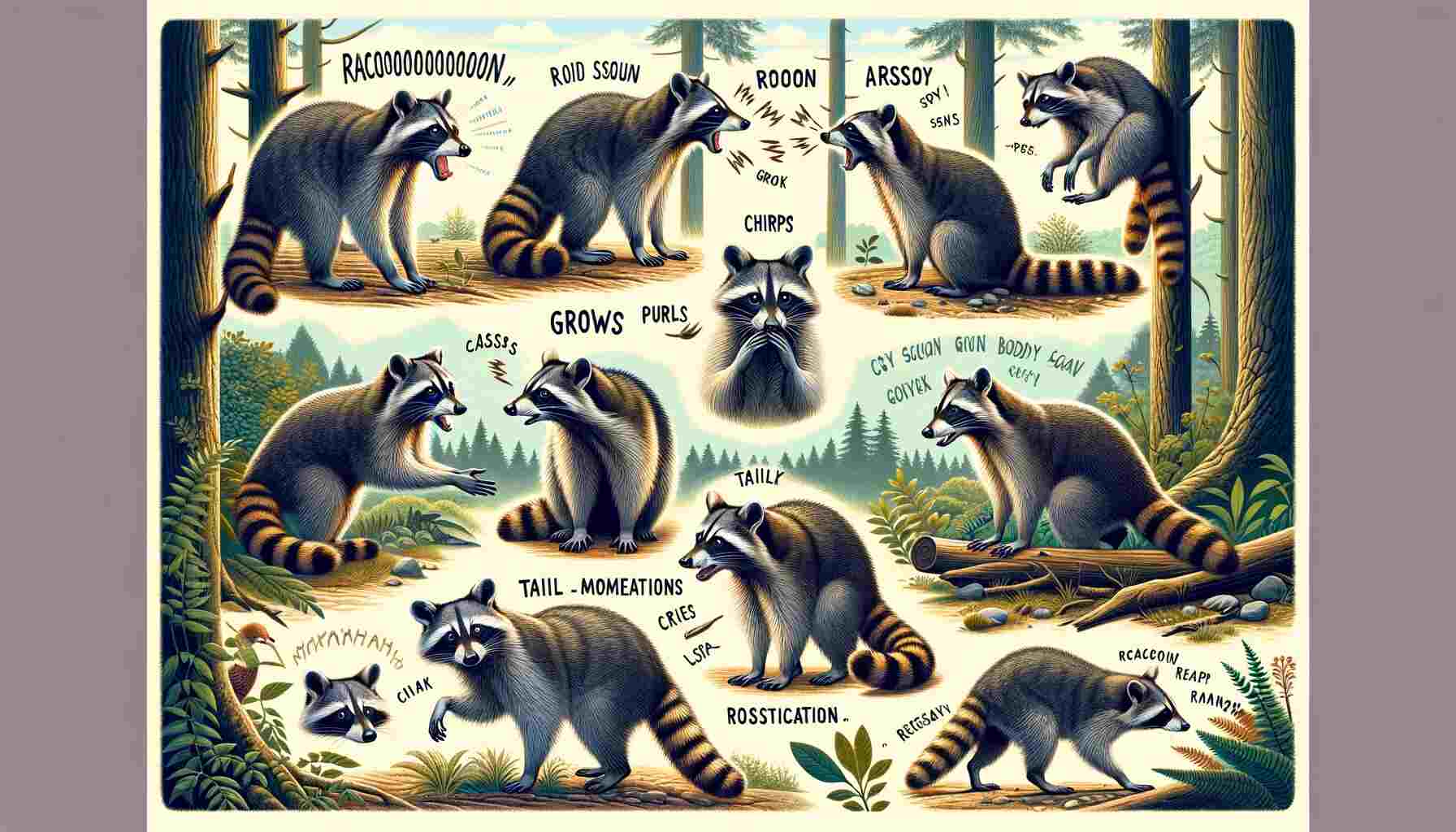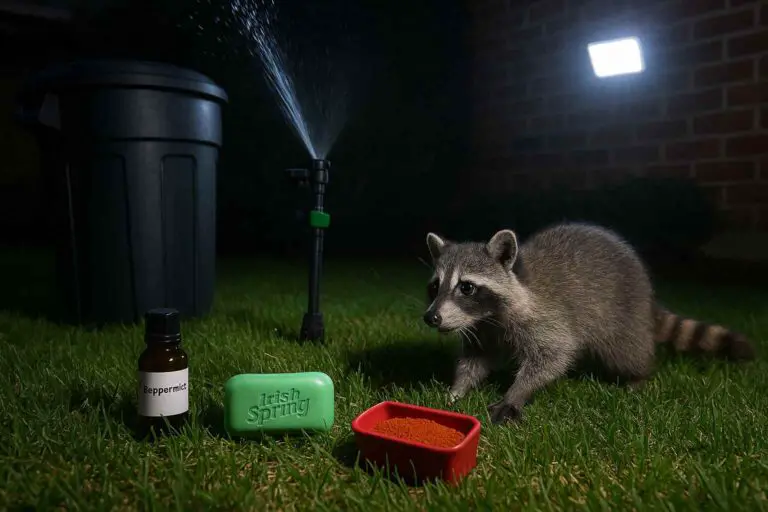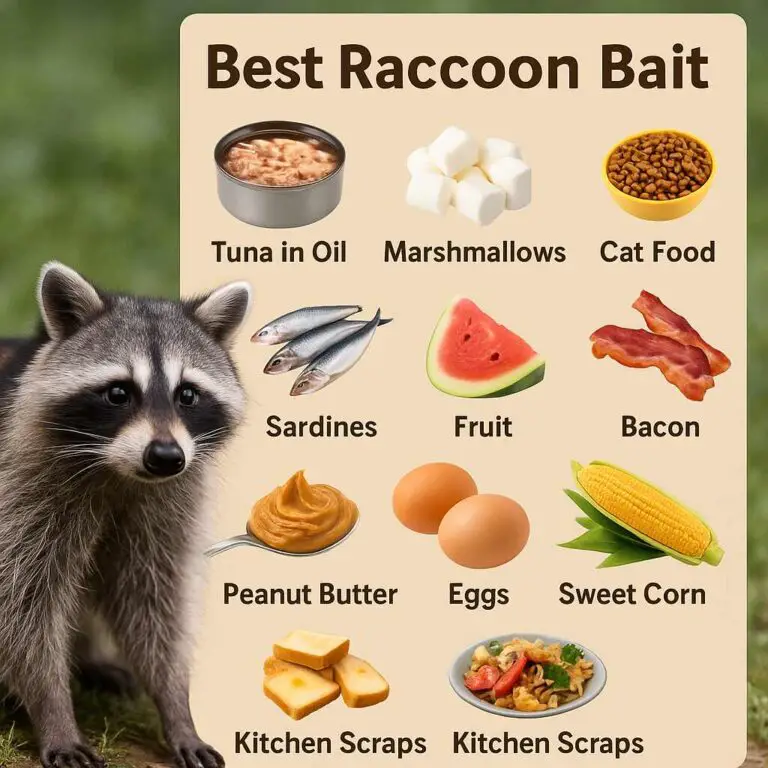Raccoons communicate using a combination of vocalizations and body language, which helps them interact with each other and with humans. This article aims to provide a comprehensive understanding of raccoon communication, delving into their vocalizations, body language, and how these behaviors play a role in their interactions.
Raccoon Communication
Raccoons (Procyon lotor) are known for their intelligence and adaptability. These nocturnal mammals are highly social and use a range of vocal and physical signals to communicate with each other. Understanding these signals can provide valuable insights into their behavior and help humans coexist more harmoniously with these intriguing animals.
Vocalizations of Raccoons
Raccoons have a diverse array of vocalizations that they use in different contexts. These sounds can convey emotions, intentions, and warnings. Here are some of the most common raccoon vocalizations:
1. Chirps and Trills
Chirps and trills are often used by young raccoons to communicate with their mothers. These high-pitched sounds can indicate hunger, distress, or the need for attention. Adult raccoons may also use similar sounds when interacting with their offspring.
2. Growls and Snarls
Growls and snarls are typically signs of aggression or territoriality. When a raccoon feels threatened or is defending its territory, it may produce these low, guttural sounds to warn off potential intruders.
3. Purrs and Whimpers
Purring and whimpering are usually associated with contentment or submission. A raccoon might purr when it is comfortable and relaxed, while whimpering can indicate a desire for social interaction or a sign of submission to a more dominant raccoon.
4. Screeches and Screams
Loud screeches and screams are often heard during fights or when a raccoon is in severe distress. These sounds can be quite alarming and are usually a sign that the raccoon is experiencing pain or fear.
5. Chattering and Clicking
Raccoons may produce chattering or clicking sounds when they are excited or agitated. These sounds can serve as a form of social communication, helping raccoons coordinate their actions or alerting others to the presence of food or danger.
Body Language of Raccoons
In addition to vocalizations, raccoons use a variety of body language signals to communicate. These physical cues can provide valuable insights into their emotional state and intentions.
1. Tail Movements
The tail is an important communication tool for raccoons. Different tail positions and movements can convey various messages:
- Erect Tail: An erect tail can indicate alertness or aggression. A raccoon with its tail raised may be feeling threatened or ready to defend itself.
- Curled Tail: A relaxed, curled tail often signifies contentment or calmness. This position is commonly seen when a raccoon is resting or grooming.
- Lashing Tail: Rapid tail movements, such as lashing or flicking, can indicate agitation or excitement. This behavior is often observed when a raccoon is engaged in a social interaction or has spotted potential prey.
2. Posture
A raccoon’s posture can also provide important clues about its emotional state and intentions:
- Upright Stance: When a raccoon stands on its hind legs, it may be trying to get a better view of its surroundings or assert dominance over another animal.
- Crouched Position: A crouched, low-to-the-ground posture often indicates fear or submission. This position makes the raccoon appear smaller and less threatening.
- Puffed-Up Body: When a raccoon puffs up its body fur and arches its back, it is usually trying to appear larger and more intimidating. This display is often accompanied by growling or hissing.
3. Facial Expressions
Facial expressions can be subtle but significant indicators of a raccoon’s emotions:
- Bared Teeth: Showing teeth is a clear sign of aggression or fear. A raccoon may bare its teeth to warn off a perceived threat.
- Relaxed Face: A relaxed facial expression, with closed or half-closed eyes and no visible tension in the muscles, typically indicates contentment or calmness.
Communication Between Raccoons
Raccoons are social animals, and communication plays a crucial role in their interactions. They use a combination of vocalizations and body language to establish social hierarchies, coordinate group activities, and maintain bonds.
1. Social Hierarchies
Raccoon groups, also known as “nursery groups” or “fission-fusion societies,” often consist of females and their offspring. Within these groups, social hierarchies are established through a combination of vocal and physical signals. Dominant raccoons may use growls, snarls, and assertive body language to maintain their status, while subordinate raccoons may respond with submissive postures and whimpers.
2. Coordinated Activities
Raccoons often engage in coordinated activities, such as foraging and denning. Communication is essential for these activities, allowing raccoons to share information about food sources and potential dangers. Chirps, trills, and other vocalizations can help raccoons stay in contact with each other while foraging, ensuring that the group remains cohesive.
3. Bond Maintenance
Social bonds are important for raccoons, especially between mothers and their offspring. Vocalizations such as chirps, purrs, and whimpers help maintain these bonds by facilitating communication and emotional connections. Grooming and physical closeness also play a role in bond maintenance, providing comfort and reinforcing social ties.
Communication with Humans
Raccoons are highly adaptable and have learned to coexist with humans in urban environments. Understanding their communication can help humans interact more effectively with these animals and reduce conflicts.
1. Recognizing Vocalizations
Being able to recognize and interpret raccoon vocalizations can provide valuable insights into their behavior and needs. For example, high-pitched chirps and trills may indicate that young raccoons are nearby, while growls and snarls suggest that a raccoon is feeling threatened and should be given space.
2. Interpreting Body Language
Interpreting raccoon body language can also help humans understand their intentions and emotional state. An erect tail and aggressive posture indicate that a raccoon is feeling threatened, while a relaxed, curled tail suggests that the animal is calm and not a threat.
3. Reducing Conflicts
Understanding raccoon communication can also help reduce conflicts between humans and raccoons. For example, providing secure trash containers and avoiding direct interactions can minimize the likelihood of aggressive encounters. Additionally, recognizing signs of distress or agitation in raccoons can help humans respond appropriately and avoid escalating the situation.
Studies and Statistics on Raccoon Communication
Research on raccoon communication has provided valuable insights into their behavior and social dynamics. Here are some notable studies and statistics:
- A study published in the journal Animal Behaviour found that raccoons use a complex system of vocalizations and body language to communicate with each other. The researchers observed a variety of vocalizations, including chirps, trills, growls, and screams, and noted that these sounds were often accompanied by specific body language cues.
- Another study published in the journal Behavioral Ecology and Sociobiology explored the role of social hierarchies in raccoon groups. The researchers found that dominant raccoons used vocal and physical signals to maintain their status, while subordinate raccoons responded with submissive behaviors.
- According to the Urban Wildlife Research Center, raccoons in urban environments have adapted their communication strategies to coexist with humans. The researchers noted that urban raccoons were more likely to use vocalizations to communicate with each other, while rural raccoons relied more on body language.
Practical Tips for Coexisting with Raccoons
Coexisting with raccoons can be challenging, but understanding their communication can help humans interact with them more effectively. Here are some practical tips for coexisting with raccoons:
1. Secure Food Sources
Raccoons are opportunistic feeders and will take advantage of easily accessible food sources. To reduce the likelihood of conflicts, secure trash containers and avoid leaving pet food or birdseed outside.
- Recommended Product: Toter 32-Gallon Bear-Tight Trash Can – This trash can is designed to keep raccoons and other wildlife from accessing your garbage.
2. Avoid Direct Interactions
While raccoons may appear friendly, it is important to avoid direct interactions. Raccoons can carry diseases, such as rabies, and may become aggressive if they feel threatened. Give raccoons space and avoid approaching them.
- Recommended Product: Wildlife Control Supplies Raccoon Repellent – This repellent can help keep raccoons away from your property without harming them.
3. Recognize Signs of Distress
Understanding raccoon vocalizations and body language can help humans recognize signs of distress or agitation. If a raccoon appears agitated or is making loud vocalizations, give it space and avoid escalating the situation.
4. Provide Natural Deterrents
To discourage raccoons from entering certain areas, consider using natural deterrents. For example, placing motion-activated lights or sprinklers near trash containers can help deter raccoons from foraging in those areas.
- Recommended Product: Hoont Motion-Activated LED Animal Repellent – This device uses motion-activated lights to scare away raccoons and other wildlife.
Conclusion
Raccoons are highly intelligent and adaptable animals with a complex system of communication. By understanding their vocalizations and body language, humans can gain valuable insights into their behavior and interact with them more effectively.
Recognizing the signs of distress or agitation in raccoons can help reduce conflicts and promote coexistence. Whether in rural forests or urban neighborhoods, raccoons continue to thrive, thanks in part to their sophisticated communication strategies.








